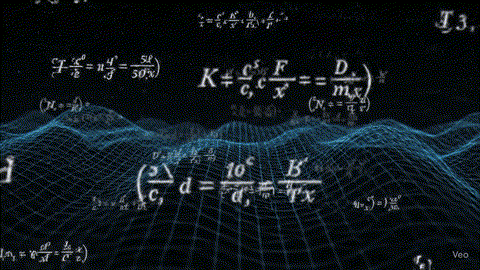Cybernetic Cryptography
ENI6MA a Cryptographic Engine for Zero-Knowledge Proofs Across Modalities
This architecture enables secure identity, data integrity, and authorization—without storing secrets, revealing credentials, or requiring specialized hardware. ENI6MA functions as a layer-zero trust substrate for post-quantum ecosystems, redefining authentication as an epistemic act, not a secret exchange.
RWP Accumulator with Lower Dimensional Witnesses
The Rosario-Wang Accumulator cypher employs a novel approach to cryptographic accumulators, leveraging the Holographic Morphism with private languages. This cypher uses a set of enumerated alphabets with equal cardinality to create witnesses, ensuring efficient and secure membership proofs.
Witnesses in the cypher are lower-dimensional references that are expanded after determining the holographic morphism. This morphism identifies a subset of the projective alphabet sets containing character members of another alphabet, whose members are distributed equally across the new lower-dimensional projective set. The higher-dimensional set contains a larger number of members, representing the individual members of the secret key, from which the witness is provided in any round of a sigma protocol.
Key Definitions
The Accumulator cypher defines the projective set as a set containing elements arranged in a lower-dimensional space, which expands to identify specific subsets through holographic morphisms. The holographic morphism is a hidden morphism linking two alphabets that have no intersection. This morphism is used to expand lower-dimensional witnesses. The lower-dimensional representation process maps higher-dimensional members of an alphabet into lower-dimensional projective sets.
Interactive Cypher Setup
In the setup phase, the projective set is defined to model the domain . A synonym relation to the emergent set is established via a hidden morphism.
During the accumulation phase, the short representation of the set is created, partitioning it into subsets that form the basis of the projective set:
For membership holomorphic witness responses, a lower-dimensional reference is created using the Holographic Morphism, then expanded to identify a subset of the projective alphabet sets.
For non-membership witnesses, lower-dimensional references are generated and expanded to verify non-inclusion in the set :
The verification process utilizes the projective morphism to trace the exact path from the lower-dimensional witness to the accumulated representation :
The primary equations and formulations in the RWP Accumulator cypher include the accumulator representation, membership holomorphic witness responses, non-membership holomorphic witness responses, and the sigma protocol for witness verification.
Example
Consider a set . The accumulator represents this set in projective form:
For membership witness :
Verification:
Holographic Witness Accumulation
In setup, models the domain . The accumulate phase creates the short representation of the set , partitioning it into projective subsets:
Public Key Generation
Membership witnesses:
Non-membership witnesses:
Verification
Equations and Formulations
-
Accumulator Representation
-
Membership Public Key Generation
-
Non-Membership Public Key Generation
-
Sigma Protocol for Witness Verification
Challenge: Response:
Verification:
🔬 Cryptographic Foundations
ENI6MA introduces a universal symbolic language:
- A unified symbol set spans multiple modalities—text, tone, color, gesture.
- A morphism-invariant commitment array encodes a secret word across any medium.
- Each symbol maps to an eigen-signature in a Hilbert manifold , enabling projection, verification, and recovery across media: light, sound, haptics, or RF.
Above this geometric layer operates the Rosario–Wang Protocol:
- Each session generates a nonce-shuffled alphabet and a round-specific projection .
- The prover must show correct subset membership of their projection across randomized rounds, producing a single-bit accumulator for verifier validation.
- This interaction is stateless, zero-knowledge, and replay-resistant—even when transcripts are fully observed.
The result is a zero-knowledge password proof (ZKPP)—a cognitive authentication primitive that is:
- Fully entropy-synchronized via symmetric nonce lifecycles (AVAILABLE → RESERVED → USED),
- Immune to phishing, replay, or brute-force attacks,
- Secure against quantum adversaries due to combinatorial projection hardness.
🔐 Security Model
| Threat Class | Defense Mechanism | Result |
|---|---|---|
| Replay Attacks | Entropy-gated morphisms , non-reusable nonces | Observed transcripts become invalid |
| Phishing / Keylogging | Symbol shuffling per round | Recorded keystrokes don't replay secrets |
| Quantum Attacks | Hilbert lattice traversal over multiple combinatorial spaces | Grover and Shor ineffective |
| Storage Breach | Stateless commitments, no persistent secrets | Server-side breaches yield nothing usable |
Mathematically, soundness and zero-knowledge are formalized via:
- Entropy-accumulated membership proofs,
- Roundwise projection foliations over disjoint symbolic subspaces,
- Probabilistic guarantees of security: .
🌐 Applications Across Ecosystems
ENI6MA's symbolic core and modular deployment model allow it to anchor secure communication, identity, and verification in:
🔗 Enterprise & IAM
- Replace MFA codes with in-memory cognitive proofs
- Integrate via SSO and Zero-Trust identity providers (Okta, Azure AD)
🌍 IoT & Embedded Systems
- Stateless zero-knowledge attestation on constrained hardware
- Supports gesture pads, LED rings, ultrasonic emitters
📡 Blockchain & Web3
- Post-quantum wallets with portable seed commitments
- ENI6MA proofs substitute for VRF/VRF+PoS-based block eligibility
🧠 Human Authentication & E-ID
- Memory-based passwords resistant to shoulder-surfing
- Cognitive symbol challenges rendered via QR, NFC, or audio
🎛️ Content Integrity & AI Provenance
- Symbolic eigen-signatures watermark neural networks
- Embed proofs in weights or activations without degrading performance
🧩 Protocol Stack & Reference Architecture
| Layer | Role | Patent Anchor |
|---|---|---|
| Commitment Engine | Builds from user-secret + nonce | Claim 1, Axiom 3 |
| Projection Driver | Generates session-specific slice of manifold | Eq. 10, Claim 8 |
| Verifier Module | Sensory matching | Eq. 12–13 |
The system requires no vault, no shared secrets, and no device registration. Each login projects a new slice of the manifold, verified via entropic gating and human-memory input.
References
- FD. Rosario & L. Wang PhD, Proof of Information Entanglement, provisional patent USPTO 2025.
- S. Goldwasser, S. Micali & C. Rackoff, "The Knowledge Complexity of Interactive Proofs", SIAM J. Comput. 18(1), 1989.
- E. Ben-Sasson et al., "Post-Quantum Zero-Knowledge Proof Systems", J. Cryptology 35(4), 2022.
